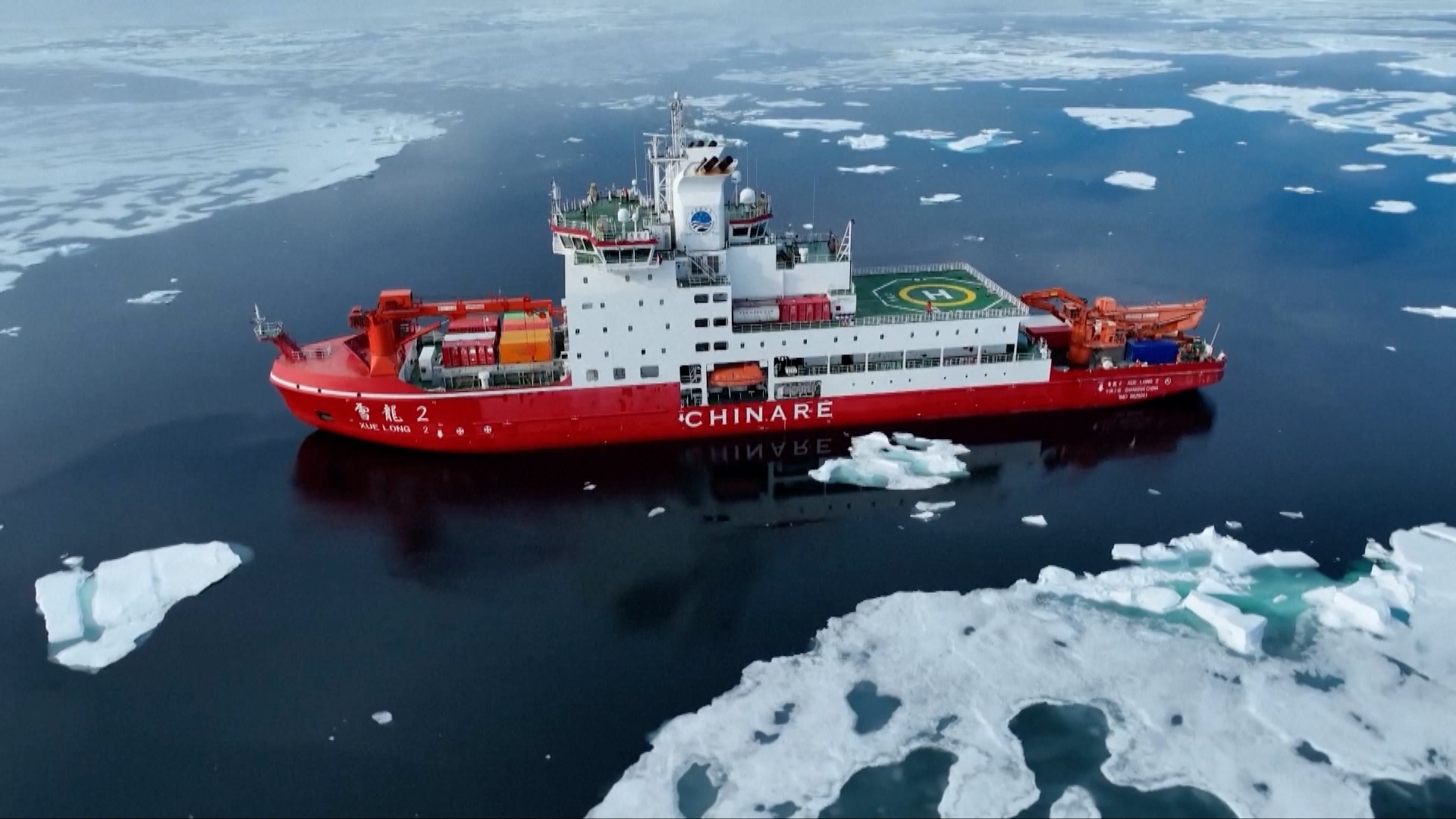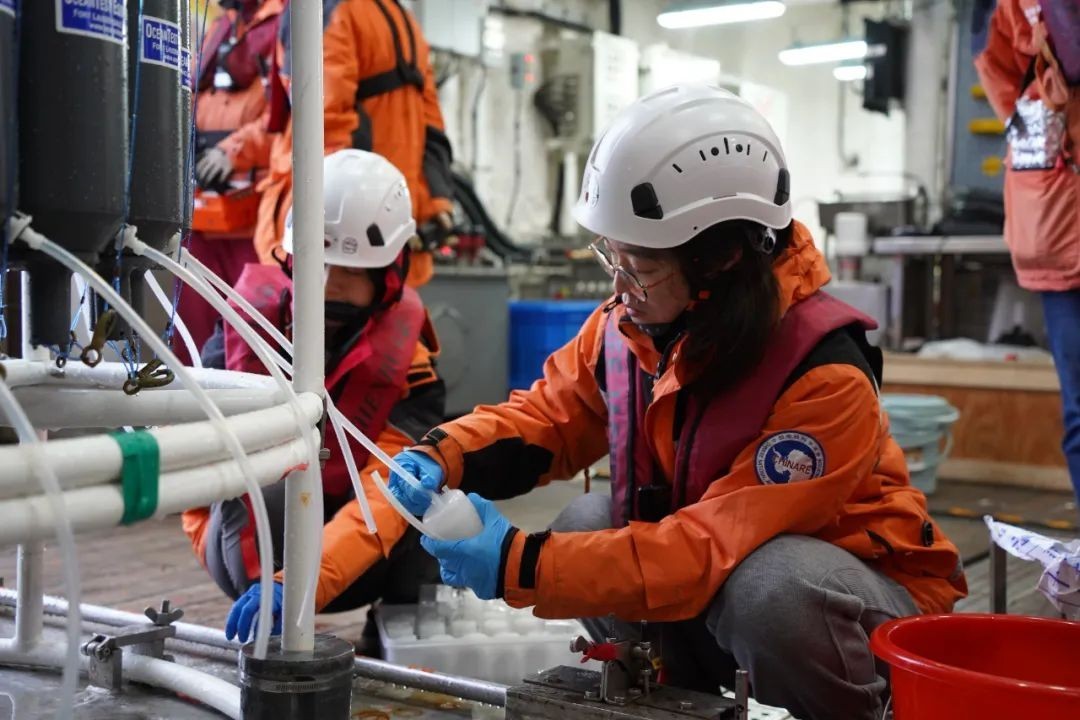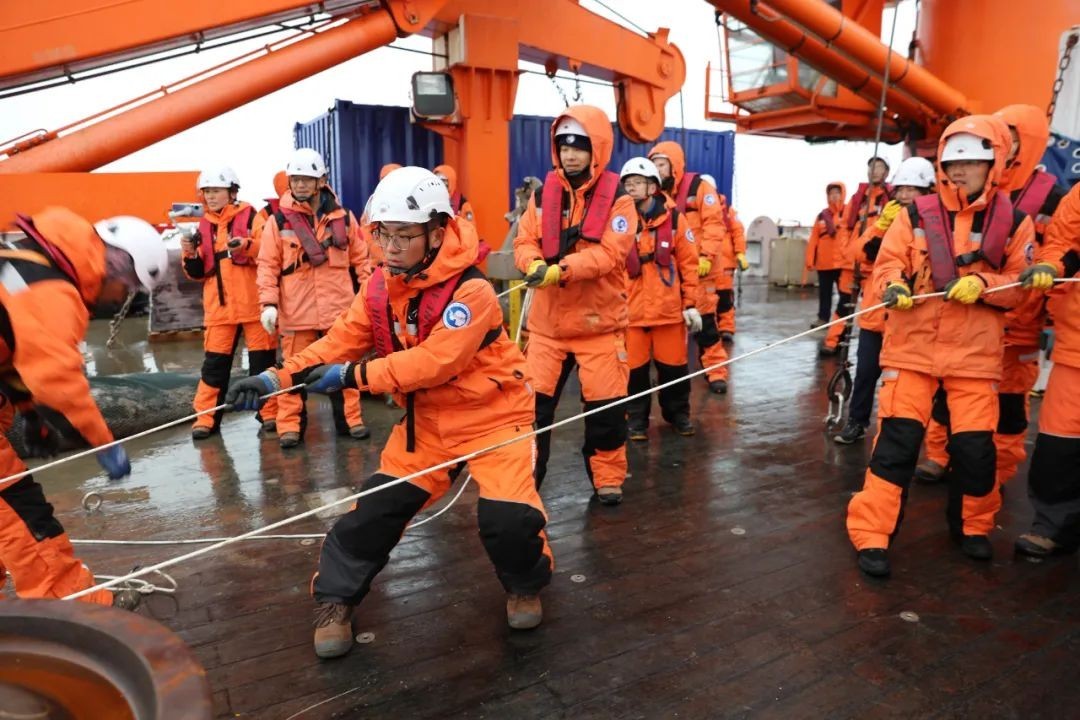01:01

Editor's note: Chinese scientists have been on board the Xuelong-2 icebreaker since July 12 for the 13th Arctic Ocean scientific expedition. They are investigating the geology and geophysics of the mid-ocean ridge as well as key environmental factors related to atmosphere, maritime and climate change. The team is expected to return in September. Follow us for the latest stories from the expedition. You can find our previous piece here.
The Chinese scientists on the nation's 13th Arctic Ocean scientific expedition have fulfilled all operational tasks in the Chukchi Sea, marking the completion of the first phase of the ongoing scientific expedition.
At the Chukchi Sea, which spans from approximately 74 degrees to 80 degrees north latitude, the expedition team aboard the icebreaker "Xuelong 2" focused on the water environment and biological ecology.
Starting on July 26, the team has so far completed all investigations on ocean optics, mesopelagic fish and hydrological water body surveys.
Zhang Jichang, leader of the stern biology team, China's 13th Arctic Ocean scientific expedition team, told China Media Group (CMG) that "it is our first time to use the RMT-8 net, which measures eight square meters with its mouth, to collect mesopelagic fish samples in the Arctic Ocean. It is a survey to show the status of key links of the biological chain in the area."

Taking seawater sampling next to the CTD, July 26, 2023. /CMG
Taking seawater sampling next to the CTD, July 26, 2023. /CMG
Hi-tech expedition
To ensure efficiency and accuracy, high-tech equipment such as aerosol-scattering lidar and the wide-band penetrating radar system, which measures the thickness of sea ice, have been applied for the scientific expedition.
Wang Jinhui, head of the expedition team, told CMG that "we have isolated 130 strains of bacteria from the seawater and sediments and collected 68 genetic specimens of marine life to further enrich the polar gene bank and specimens of marine life. This also enhanced China's capability in environmental protection and assessment of marine pollution in the Arctic Ocean."
At present, "Xuelong 2" is heading to the Gakkel Ridge near 85 degrees north latitude. Upon arrival, the expedition team will conduct geological and geophysical investigations at the mid-ocean ridge.

Setting up submerged buoys, July 26, 2023. /CMG
Setting up submerged buoys, July 26, 2023. /CMG
The Chinese scientific expedition team set off from Shanghai for the Arctic Ocean aboard the Xuelong-2 icebreaker on July 12.
The 13th expedition is expected to cover about 15,500 nautical miles and return home at the end of September.
The expedition, organized by the Ministry of Natural Resources, is intended to conduct investigations into the geology and geophysics of the mid-ocean ridge, as well as atmospheric, sea ice, marine and subsurface environmental surveys, and surveys of biomes and pollutants.